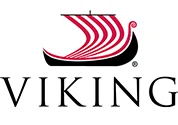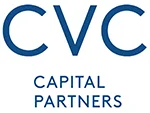 Thomas Conroy Thomas Conroy |
Heading into 2023, it was widely predicted that global merger and acquisition activity would be subdued, given the changing macroeconomic environment of rising interest rates and persistently high inflation as well as other headwinds, such as continued geopolitical tensions.
So far, the prognosticators have been proven right. According to a report by PWC, global M&A volume and value declined by 14 percent and 40 percent, respectively, during the first half of 2023 when compared to the same period in 2022.
Despite this overall decline in M&A activity, the past six to twelve months have seen a wave of M&A across the alternative investment industry, with consolidation driven by downward pressure on assets under management and fees, among other challenges. Alternative investment managers, particularly those with expertise in private credit, have been popular acquisition targets given their diversification and alpha generation capabilities. Notable examples include TPG’s acquisition of Angelo Gordon, Mubadala’s purchase of a majority stake in Fortress Investment Group and MetLife Investment Management’s acquisition of Raven Capital Management.
This rush to access specialized expertise isn’t necessarily a new trend. Blackstone notably acquired GSO Capital Partners in 2008 for its expertise in credit and distressed investing to create one of the largest platforms of its kind in the alternative asset management business, merging GSO’s operations with its existing debt investment operations. It isn’t exclusively tied to alts either, as access to additional client cohorts can be just as attractive.
| This article is featured in O'Dwyer's August '23 Financial PR/IR and Professional Services PR Magazine (view PDF version) |
However, there are more than just distribution and fundraising synergies to consider. Marketing, investor relations and sales teams at investment management firms should also consider the communications opportunities—and challenges—this wave of dealmaking provides.
Re-examine your messaging
As the asset management industry consolidates, competition for capital will intensify. This makes it even more essential for asset managers to develop distinctive identities and speak to the moment. Whether it’s a specialized investment strategy, a strong track record or a client-centric approach, asset managers should focus on highlighting their differentiating factors to attract investors in a crowded marketplace where the big firms are getting bigger and have more to offer. The ongoing transformation across the industry presents a prime opportunity for asset managers to position their brands in a compliant and controlled way.
Get proactive
In the past, many alternative investment managers were hesitant to take a proactive approach to marketing and communications. That hasn’t been an option for some time and is even more true as industry players transform. Now, more than ever, firms must be willing to put themselves out there, share insights, showcase expertise and otherwise embrace the role of expert spokespeople with the media if they want to get their fair share of attention. For many firms, this will require some new practices in terms of the issues they comment on and the speed with which they respond to opportunities. One significant opportunity is to comment on what’s happening in the industry itself, how it changes the investment landscape and the opportunity set for investors of all sizes.
One effective strategy to increase message visibility in a controlled way is targeted thought leadership that allows firms to go beyond generic market commentary and highlight specific areas where they possess unique expertise or can provide perspective on emerging trends. Approached thoughtfully, thought leadership campaigns can help asset managers stake out their authority in the market and differentiate themselves from competitors. At a moment when investors are looking for answers on a variety of pain points, sharing long-term perspectives that educate readers, display subject matter expertise and project confidence is exactly what’s called for.
Another area where firms can be more proactive is digital marketing and social media management. Following large announcements, such as a firm merger, there’s typically a sizable uptick in social media activity as employees from either business share the news with their personal networks. Firms should use the chatter around a deal as an opportunity to drive impressions toward their channels, where the impact can be measured and potential new audiences can be cultivated. A timely content strategy that capitalizes on this momentum is a great way to share perspectives and highlight the senior team in a controlled but proactive way.
Focus on culture
Heightened competition and consolidation aren’t just making fundraising more difficult for alternative asset managers, but they have also made attracting and retaining top talent a key battleground. Accordingly, culture-focused communications have dramatically increased in importance. Communicating a strong and distinct corporate culture can serve as a powerful magnet to professionals who align with an organization’s values and mission. Clear and consistent communication about the company’s culture can also help existing employees feel connected, engaged and motivated, enhancing employee satisfaction and engendering loyalty.
There are many channels that can bolster your culture message, but the one that continues to be undervalued by many is LinkedIn. LinkedIn is one of the first locations prospective talent will turn to when researching a firm. LPs are increasingly using the site for similar reasons as well. It’s key to build out your channel with topical material in new formats that speak directly to your audience. Although video has become cheaper and easily available via online tools, too few firms take advantage of this to support their culture messaging. Firms that highlight their employees and their values will have a platform that succeeds in reaching talent. In addition, people-focused LinkedIn posts typically perform the best overall.
Strengthen your network
With the current M&A activity across alts, asset managers’ networks of employees, advisors, counterparties, regulators and analysts—for publicly traded institutions—are being bombarded with news, raising questions about all firms’ futures. In this uncertain environment, tailored and frequent communications will assuage concerns, build trust and strengthen relationships.
While managers are generally good at focusing on deals, they’re less practiced in sharing progress across the portfolio, outside of quarterly updates. Showing continued and steady progress in multiple investments and highlighting the executives guiding portfolio company growth can be a great way to communicate stability when other firms appear to be on less stable ground. This doesn’t have to be onerous. Some “quick hit” commentary in bullet point format that makes for easy reading is better than two pages of long-form content.
As asset managers vie for capital in an increasingly crowded marketplace, they must embrace strategic communication as a powerful tool. By delivering unique messages, utilizing proactive communications, establishing thought leadership and managing relationships with stakeholders, they can navigate the changing landscape with conviction and stay top of mind with their respective audiences.
***
Thomas Conroy is a Senior Account Supervisor at Stanton.


 FGS Global represents private equity firm Thoma Bravo as it makes a $4.6B bid for Darktrace, a UK-based cybersecurity artificial intelligence firm.
FGS Global represents private equity firm Thoma Bravo as it makes a $4.6B bid for Darktrace, a UK-based cybersecurity artificial intelligence firm.
 Edelman handles Viking Holdings, the river and ocean luxury cruise line that plans to raise $1B via an IPO priced in the $21 to $25 per share range.
Edelman handles Viking Holdings, the river and ocean luxury cruise line that plans to raise $1B via an IPO priced in the $21 to $25 per share range. Teneo is handling the initial public offering of CVC Capital Partners, one of Europe’s largest private equity firms with nearly $200B in assets under management.
Teneo is handling the initial public offering of CVC Capital Partners, one of Europe’s largest private equity firms with nearly $200B in assets under management. Brunswick Group represents Endeavor Group Holdings as it agrees to go private via its acquisition by Silver Lake technology investment firm, which is handled by Edelman Smithfield.
Brunswick Group represents Endeavor Group Holdings as it agrees to go private via its acquisition by Silver Lake technology investment firm, which is handled by Edelman Smithfield.


 Have a comment? Send it to
Have a comment? Send it to 
No comments have been submitted for this story yet.